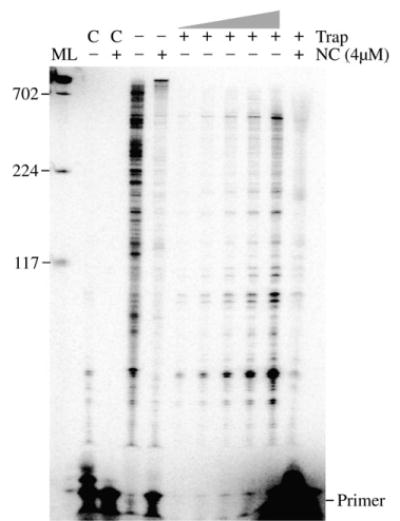Figure 8.

Reverse transcription assay indicates that enhanced processivity of RT plays no role in the synthesis of long DNA products in vitro. Shown is an autoradiogram of a trap assay using the 1.9 kb RNA segment of HIV as template. Control reactions (C) were performed in the presence (+) or absence (−) of 4 μM NC to test the effectiveness of the trap (see Materials and Methods). Reactions without trap were also performed with or without NC as indicated. In reactions with poly(rA)-oligo (dT) trap, RT was pre-incubated with the primer-template in the presence or absence of NC, and synthesis was initiated by the addition of divalent cation and dNTPs along with trap. The trap sequesters RT molecules that dissociate from the primer-template limiting extension to a single binding event. The trap reactions without NC were serially diluted 1:2 from right to left with the far right lane corresponding to a single reaction and the far left 1/16th of a reaction. The trap reaction with NC is ten reactions combined after extraction and precipitation, then loaded in a single lane. The samples were run on a 5% polyacrylamide gel. All markings are as in Figure 1(b). A repeat experiment yielded similar results.
